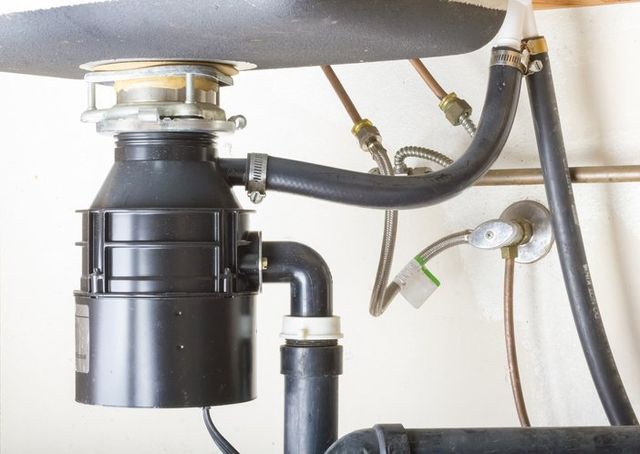Speedy Solutions for Fixing a Dripping Waste Disposal Unit
Speedy Solutions for Fixing a Dripping Waste Disposal Unit
Blog Article
Do you find yourself in search of facts and techniques on Why Is ?

Garbage disposals are crucial kitchen home appliances that assist in disposing of food waste effectively. Nevertheless, a dripping waste disposal unit can be a frustrating and messy problem to handle. Luckily, lots of leakages can be taken care of conveniently with a few straightforward actions. In this write-up, we will certainly review just how to take care of a dripping garbage disposal efficiently.
Intro
Waste disposal unit are mounted under kitchen area sinks and are developed to shred food waste into smaller sized pieces, enabling it to go through the plumbing system conveniently. While these devices are generally dependable, leakages can happen in time due to damage, loosened connections, or damages to the system.
Step-by-Step Overview to Taking Care Of a Leaking Garbage Disposal
Switch off the Power
Before trying any fixings, guarantee that the power to the garbage disposal system is turned off to stop the threat of electrical shock.
Find the Leakage
Determine the specific location of the leakage and establish the cause
Tighten Connections
Make use of a wrench to tighten any kind of loose connections in between the disposal device and the pipes system.
Change Seals or Gaskets
If the leak is due to worn seals or gaskets, get rid of the old elements and replace them with brand-new ones.
Patching Splits or Openings
For fractures or openings in the disposal unit, usage epoxy or an ideal patching material to seal the broken area.
Determining the Source of the Leak
Prior to trying to deal with a leaking garbage disposal, it is important to determine the source of the leak. This can typically be done via visual examination or by carrying out straightforward examinations.
Visual Assessment
Check the waste disposal unit unit meticulously for any signs of water leakage. Pay close attention to locations around seals, gaskets, and link factors.
Checking for Leaks
One means to evaluate for leakages is by running water via the disposal system and looking for any kind of noticeable indicators of leak.
Typical Root Causes Of Leakages in Trash Disposals
Worn Seals and Gaskets
Seals and gaskets play an essential function in preventing water from dripping out of the garbage disposal. In time, these components can deteriorate, bring about leaks around the disposal unit.
Loose Connections
The connections in between the garbage disposal and the pipes system can become loose gradually, creating water to leak out during procedure.
Splits or Openings in the Disposal Unit
Physical damage to the waste disposal unit, such as cracks or holes in the housing, can likewise cause leakages.
Devices and Materials Needed for Repairing a Leaking Waste Disposal Unit
Prior to beginning the repair work process, gather the essential tools and materials, including a screwdriver, adjustable wrench, plumbing technician's putty, substitute seals or gaskets, and epoxy or patching product for fixing cracks or holes.
Checking the Waste Disposal Unit After Fixing
When the fixing is complete, check the waste disposal unit by running water via it to ensure that the leakage has been dealt with.
Preventive Upkeep Tips to Prevent Future Leakages
To prevent future leaks, it is essential to execute regular upkeep on your waste disposal unit. This consists of keeping it clean, avoiding placing non-food items or difficult things down the disposal, and occasionally looking for leaks or other concerns.
Conclusion
In conclusion, dealing with a leaking waste disposal unit is a reasonably simple procedure that can be completed with basic tools and materials. By adhering to the steps described in this short article and exercising precautionary upkeep, you can maintain your garbage disposal in good working condition and avoid costly repairs in the future.
What to Do About a Leaking Garbage Disposal
A leaking garbage disposal often goes unnoticed until you confront a sopping cabinet, a foul-smelling puddle, or an audible drip-drip-drip from the unit. The fix can be frustrating, too, because the leak can stem from a number of components in the system. Fortunately, with a little sleuthing, you can zero in on the leak and—depending on the exact location—stop the icky oozing and repair the component that caused it. Worst case scenario, if it turns out that the garbage disposal must be replaced, installing a new one is a reasonable do-it-yourself task for those with basic plumbing skills. Read on to keep the cash you’d otherwise hand over to a pro.
Prepare to find the leak
Prior to testing the garbage disposal for leaks, unplug it at the wall outlet and turn off the power from the breaker box to prevent electrical shock. Then insert a watertight sink stopper into your sink drain and wipe the unit dry with a clean cloth. In any handy container, mix a few drops of food coloring into a few cups of water, and pour the dyed water onto the sink stopper to help you locate the leak.
Investigate the source
the top, where the disposal meets the sink drain the side, where the dishwasher hose or main drain pipe connects to the disposal or the bottom of the unit Inspect each of these locations while gliding a light-colored rag over the unit; the dyed water will readily show on the rag and reveal the location of the leak. If a leak isn’t immediately apparent, remove the sink stopper and pour a few more cups of dyed water down the sink drain, then check for leaks again. Leaks near the top of the unit are more likely to show themselves while the sink is plugged, while side and bottom leaks are more noticeable while the sink is unplugged.
The metal sink flange that sits directly inside the sink drain is typically sealed around the top with plumber’s putty (a clay-like sealant) and then secured from under the sink with bolts. If the plumber’s putty deteriorates, or the bolts loosen, the flange can no longer form a watertight seal between the sink drain and the disposal—which could cause a leak at the top of the unit.
To reseal the leaky flange, you must first detach the garbage disposal. Start by loosening the screws securing the main drain pipe to the disposal, then loosen the screws in the metal clamp securing the dishwasher hose to the disposal and detach the drain pipe and dishwasher hose from the disposal. Loosen the screws in the mounting ring that connects the disposal to the metal mounting assembly beneath the sink, then pull down the disposal and carefully set it on a clean, dry surface. Loosen the bolts in the mounting assembly with a wrench, then pull down the mounting assembly and set it near the disposal.

Hopefully you liked our article about Why Is . Thanks a lot for finding the time to browse our blog post. Are you aware of somebody who is fascinated by the niche? Why not promote it. Thanks so much for going through it.
Quote & Schedule Report this page